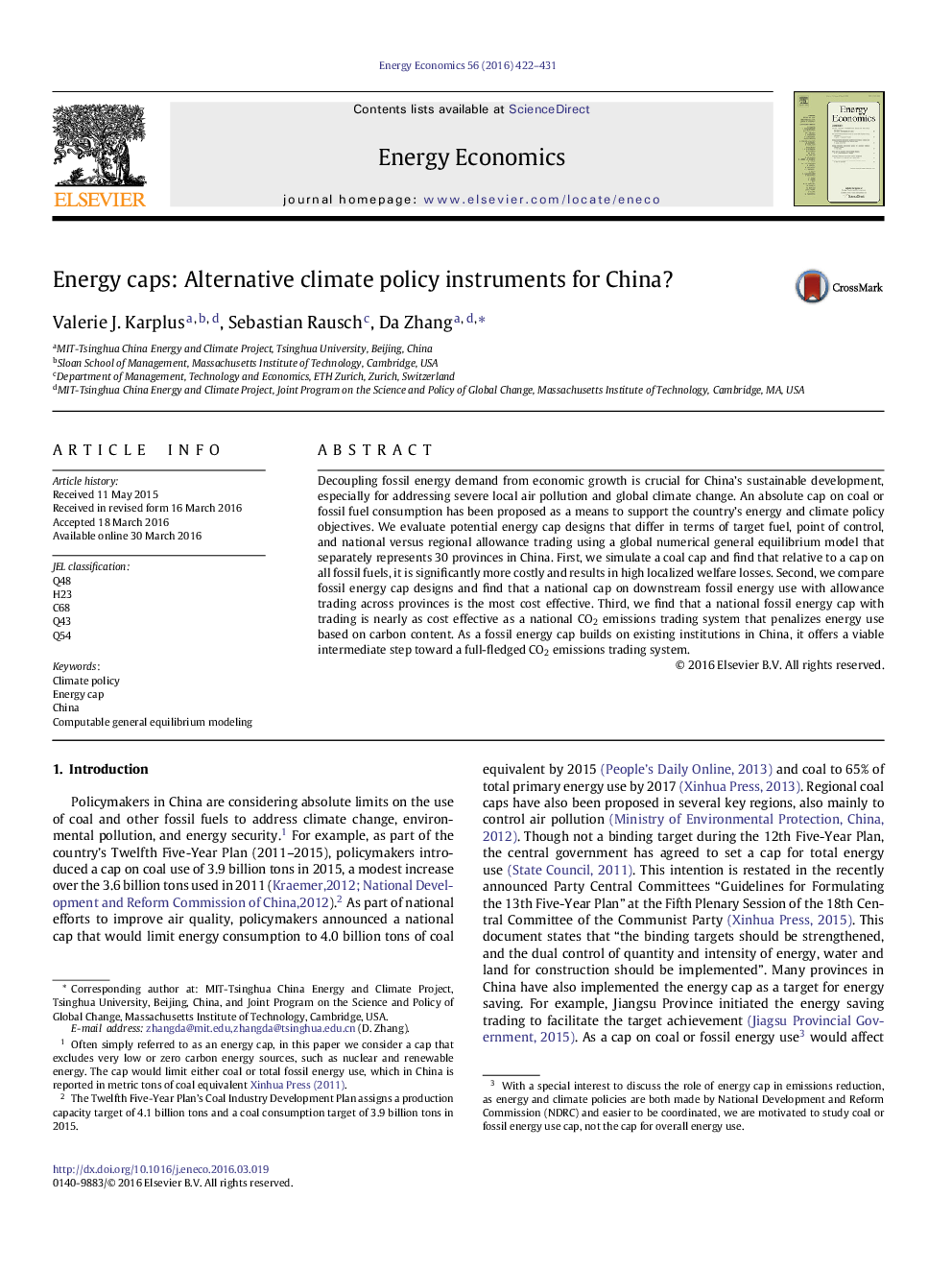| کد مقاله | کد نشریه | سال انتشار | مقاله انگلیسی | نسخه تمام متن |
|---|---|---|---|---|
| 5063999 | 1476708 | 2016 | 10 صفحه PDF | دانلود رایگان |
• We evaluate different potential energy cap designs in China.
• Coal cap is significantly more costly and results in high localized welfare losses relative to a cap on all fossil fuels.
• A national cap on downstream fossil energy use with allowance trading across provinces is the most cost effective.
• A national fossil energy cap with trading is nearly as cost effective as an emissions trading system to reduce emissions.
Decoupling fossil energy demand from economic growth is crucial for China's sustainable development, especially for addressing severe local air pollution and global climate change. An absolute cap on coal or fossil fuel consumption has been proposed as a means to support the country's energy and climate policy objectives. We evaluate potential energy cap designs that differ in terms of target fuel, point of control, and national versus regional allowance trading using a global numerical general equilibrium model that separately represents 30 provinces in China. First, we simulate a coal cap and find that relative to a cap on all fossil fuels, it is significantly more costly and results in high localized welfare losses. Second, we compare fossil energy cap designs and find that a national cap on downstream fossil energy use with allowance trading across provinces is the most cost effective. Third, we find that a national fossil energy cap with trading is nearly as cost effective as a national CO2 emissions trading system that penalizes energy use based on carbon content. As a fossil energy cap builds on existing institutions in China, it offers a viable intermediate step toward a full-fledged CO2 emissions trading system.
Journal: Energy Economics - Volume 56, May 2016, Pages 422–431
